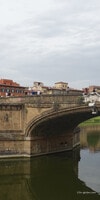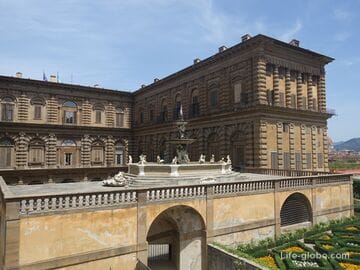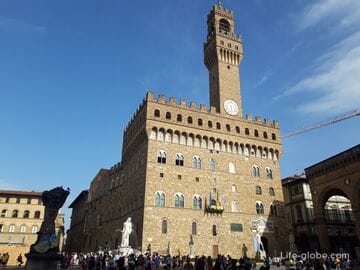The Santa Trinita Bridge, translated from Italian: the Bridge of the Holy Trinity (Ponte Santa Trinita) is a Renaissance bridge in Florence, spanning the Arno River and having a beautiful sculptural design.
It is the second most elegant and popular bridge in the city, after the neighboring Vecchio Bridge (the Old Bridge, Ponte Vecchio).
The Holy Trinity Bridge is located in the historical center of Florence and got its name from the ancient church of Santa Trinita (Basilica di Santa Trinita), located on the nearby square of the same name on the north side of the Arno River.

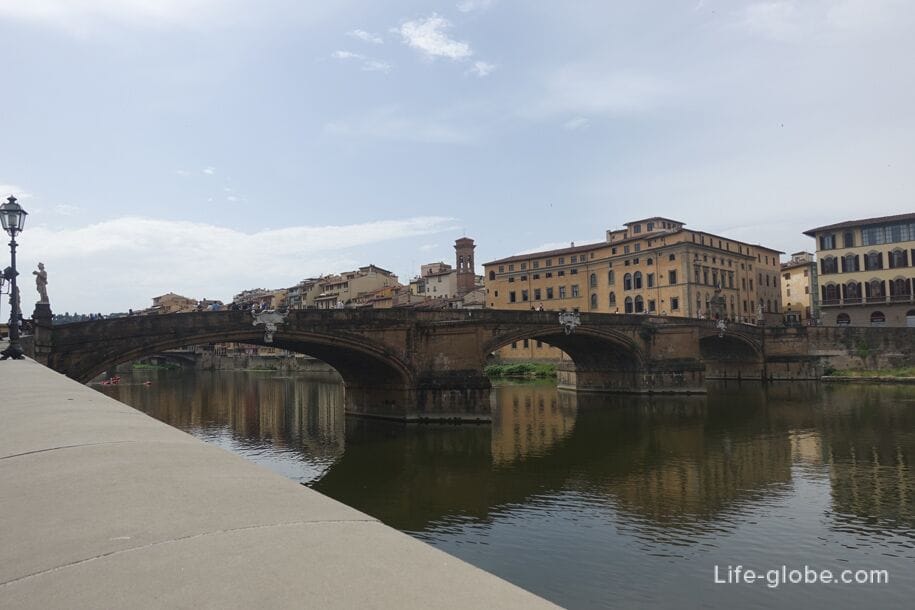
View from the bridge to Via de' Tornabuoni shopping street and Santa Trinita Square
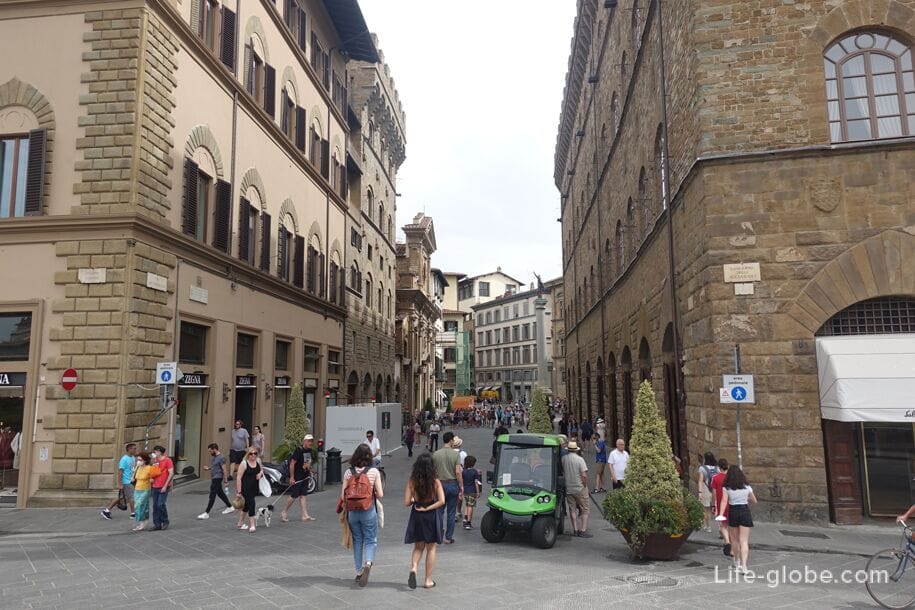
The bridge was originally built of wood in 1252 thanks to the podesta of Filippo Ugoni with the patronage of the Frescobaldi family.
The bridge collapsed in 1259 and was rebuilt in stone, which also collapsed under the pressure of the flood of 1333. The subsequent rebuilding was slow and lasted fifty years, from 1356 to 1415. A new destruction occurred in 1557 and, again, due to flooding.
The current Santa Trinita Bridge was built between 1567 and 1571 by order of Cosimo I de' Medici by Florentine architect Bartolomeo Ammannati based on Michelangelo's design. This time the bridge was built of solid yellowish-brown stone.
The bridge was destroyed by the retreating Germans on August 4, 1944. The bridge was reconstructed and its opening took place on March 16, 1958. The bridge was reconstructed, as they say, with original parts raised from the Arno River, and perhaps stones taken from the same quarry as for the previous bridge - from the Boboli Gardens quarry in Florence.
Today, the Ponte Santa Trinita is one of the architectural landmarks of Florence, and is also considered the oldest elliptical arch bridge in the world, characterized by three flattened ellipses. Each outer span of the bridge has a length of 29 meters (95 feet), and the length of its central span is 32 meters (105 feet).

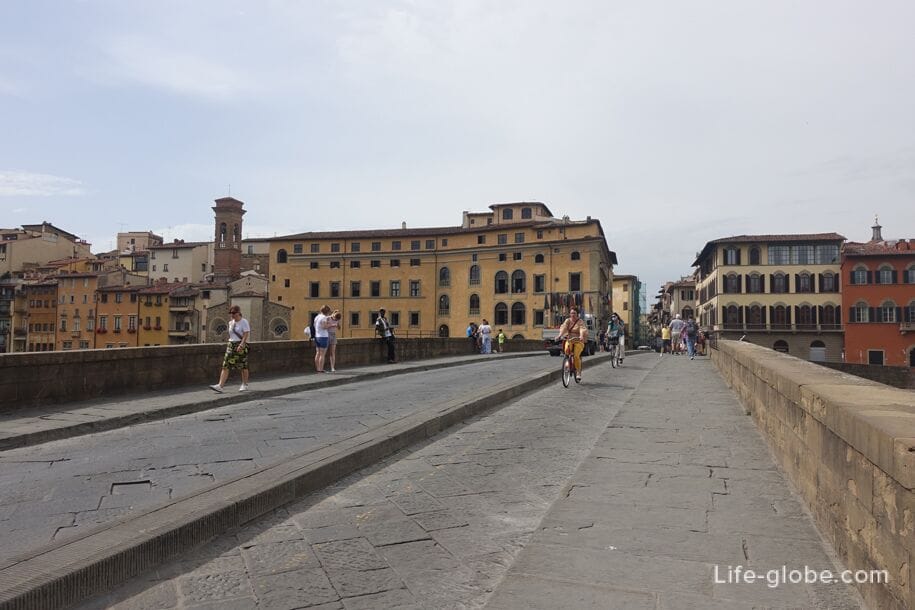
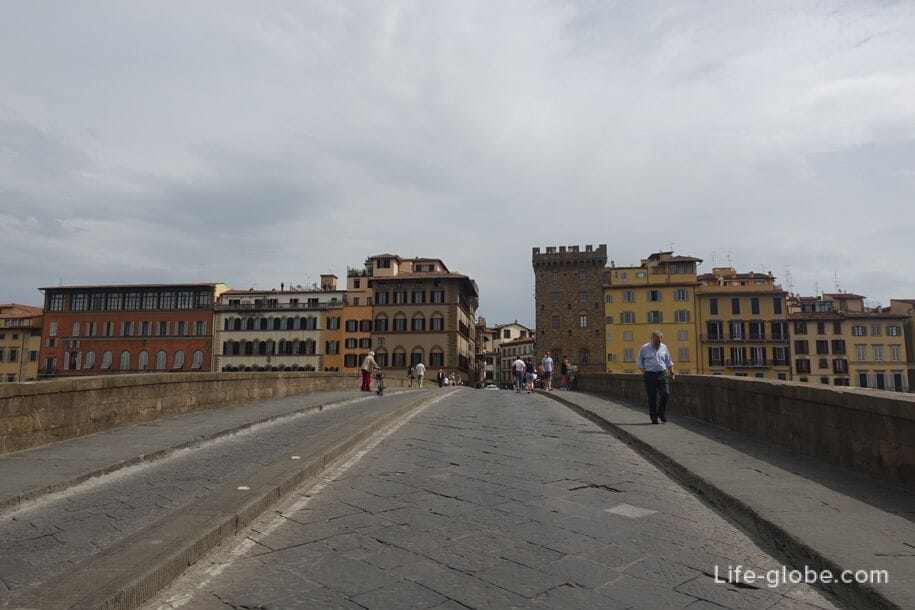
In addition to this, the bridge owes its elegance to the supporting pillars, which have a horizontal section with sharp corners, and architectural white curls-decorations on the arches.
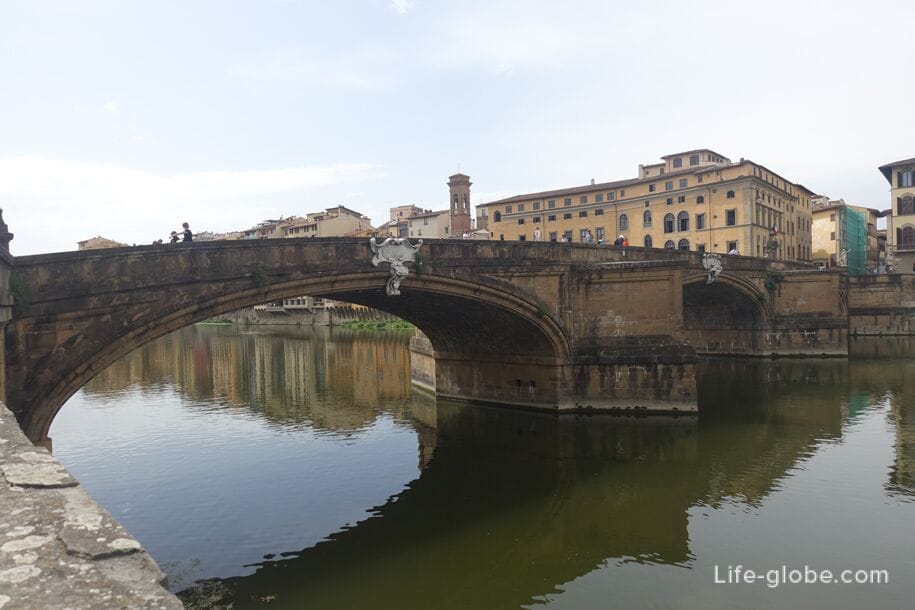
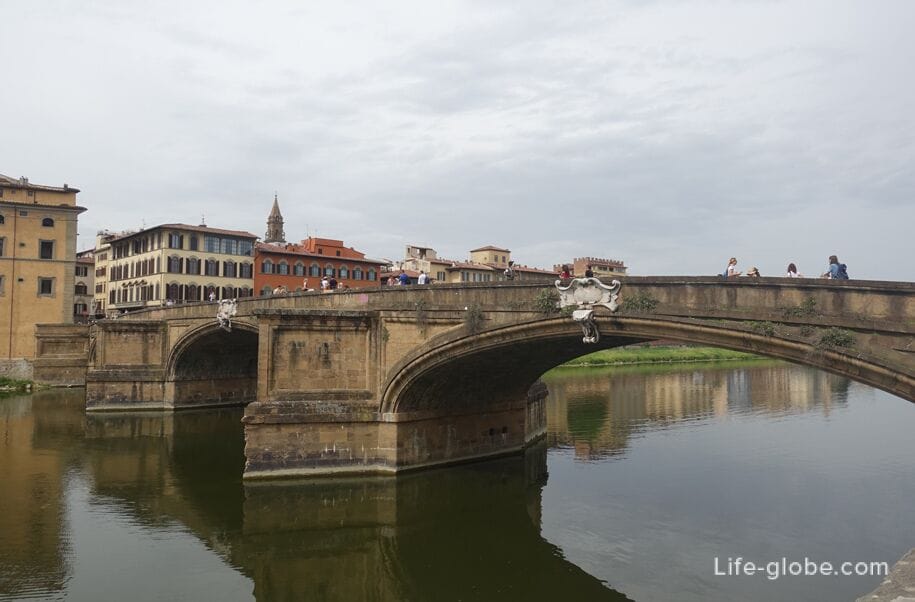
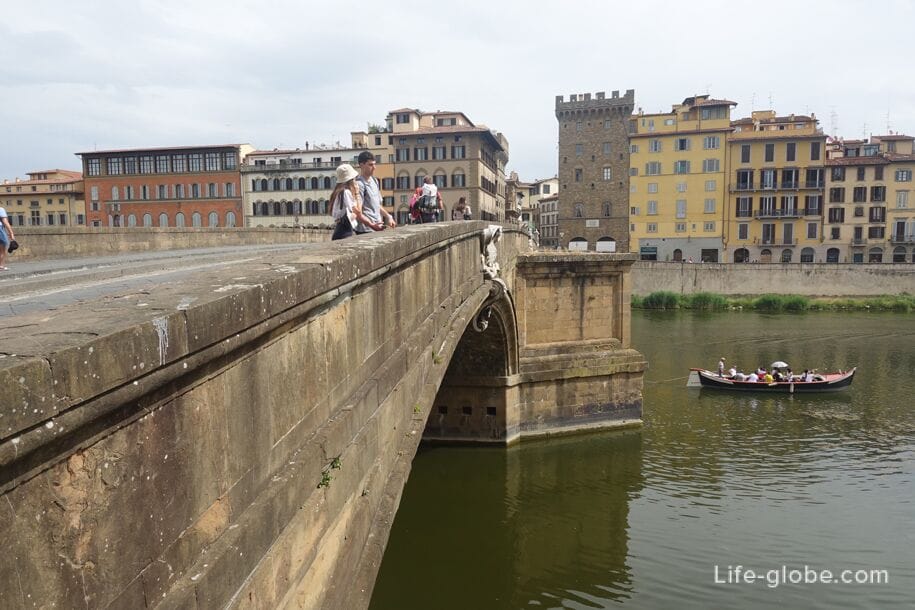
At both ends, the bridge is decorated with large marble statues on pedestals, originally installed in 1608 and representing allegorical statues depicting the four seasons: Spring by Pietro Francavilla, Winter by Taddeo Landini, Summer and Autumn by Giovanni Caccini. The sculptures were installed as part of the wedding celebrations of Cosimo II de' Medici with Maria Magdalena of Austria.
After the destruction of the Second World War, four statues were fished out of the Arno, but at first the head of Spring (Primavera) was not found; it was found in the waters of the river only in 1961, which was a great joy.
Spring and Summer from Santa Trinita SquareWinter and Autumn at the opposite end of the bridge (south) at Frescobaldi Square

At the bridge on the south side, in Piazza de' Frescobaldi, there is an old mission palace (Palazzo della Missione), which was the main building of the Frescobaldi family, which guarded the bridge financed by it.
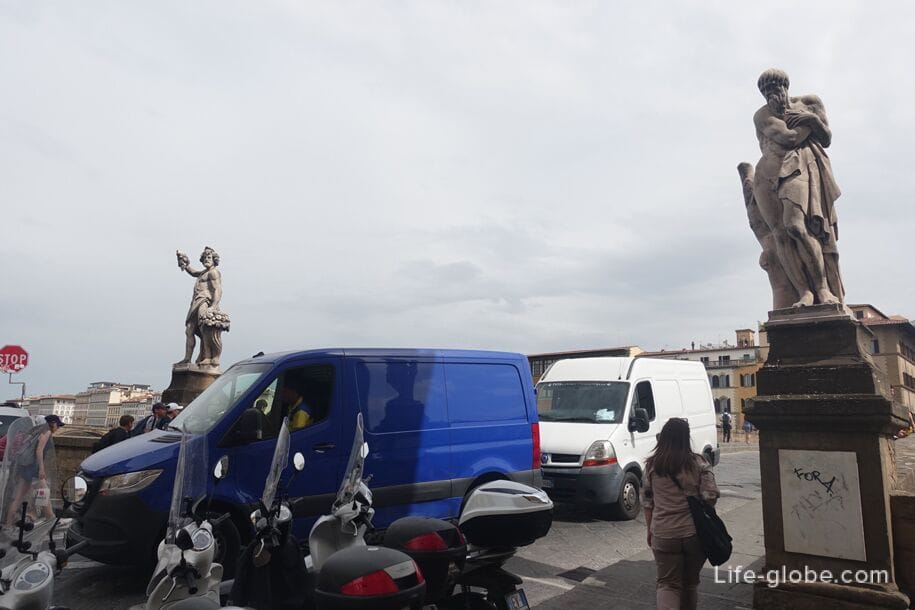
Near the bridge on the south side, in Piazza de' Frescobaldi, the old Mission Palace (Palazzo della Missione) is noteworthy, which was the main building of the Frescobaldi family, who guarded this bridge financed by her.
The building was set on fire in the fourteenth century, and then destroyed in the sixteenth, ostensibly to found the Augustinian monastery of San Jacopo, connected to the neighboring church of San Jacopo Sopr'Arno (Chiesa di San Jacopo Soprarno), the tower of which is clearly visible behind the palace. Religious were also called "Mission Monks", from which the current name of the palace came.
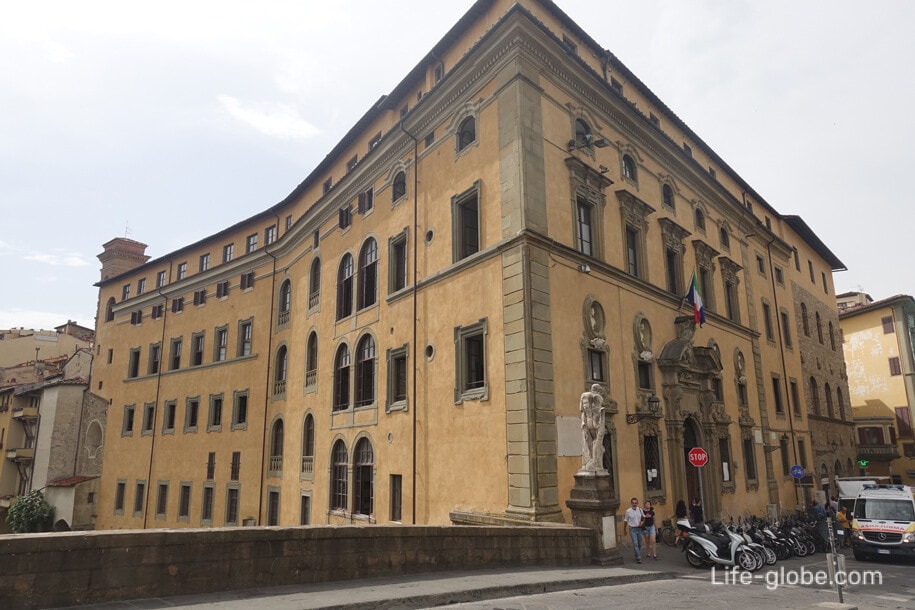
Views from the Santa Trinita Bridge
The Santa Trinita Bridge is also popular because it offers stunning views of the Arno River with embankments and bright historical buildings.
The most famous and photographed view from the bridge is the view in the eastern direction, in which the next and most famous bridge of Florence is visible - the Ponte Vecchio.
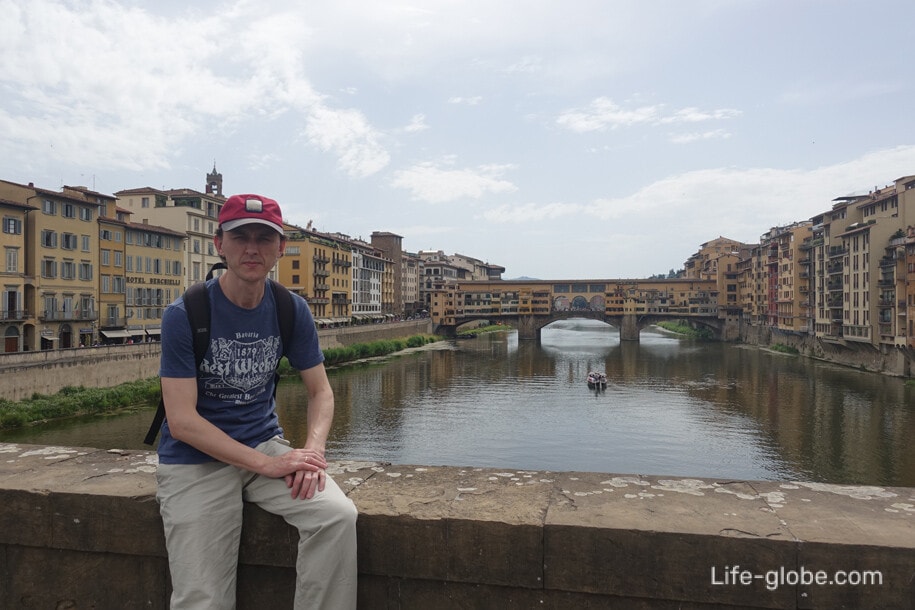
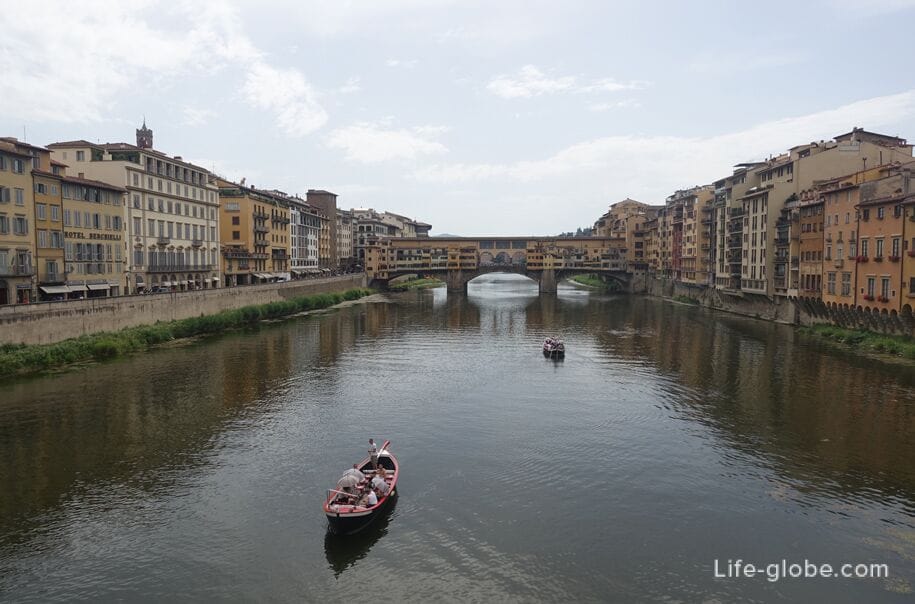
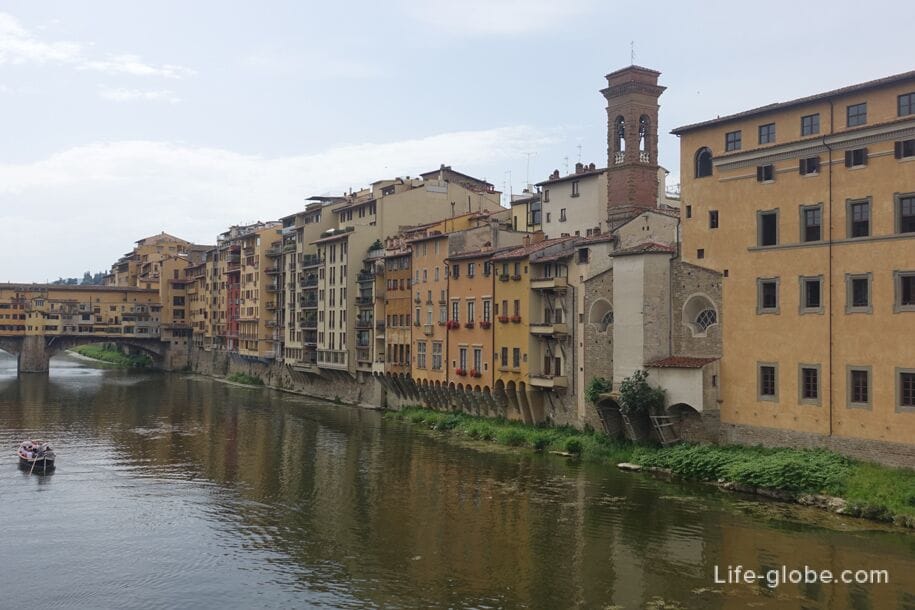
In the western direction of the Arno River, the Ponte alla Carraia is visible from the Holy Trinity Bridge.
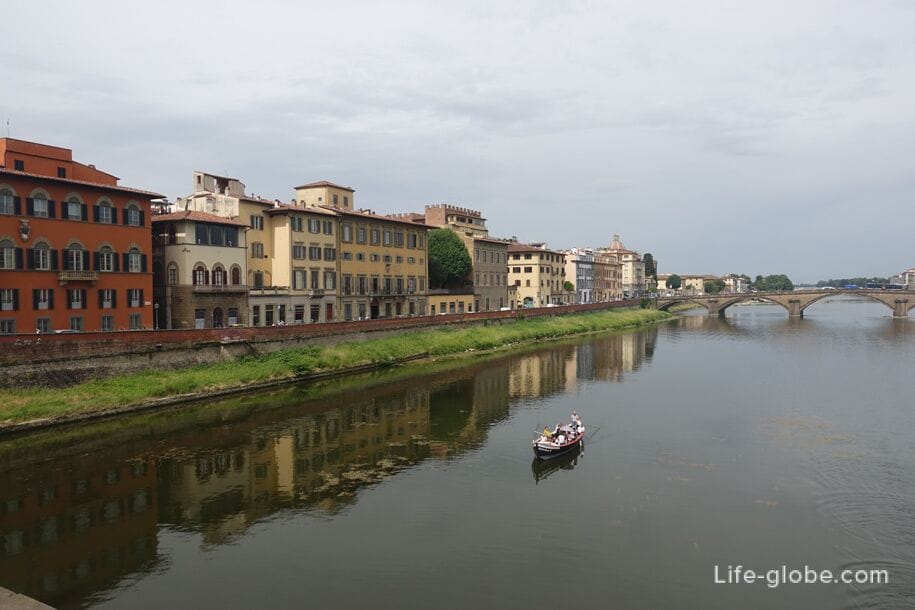
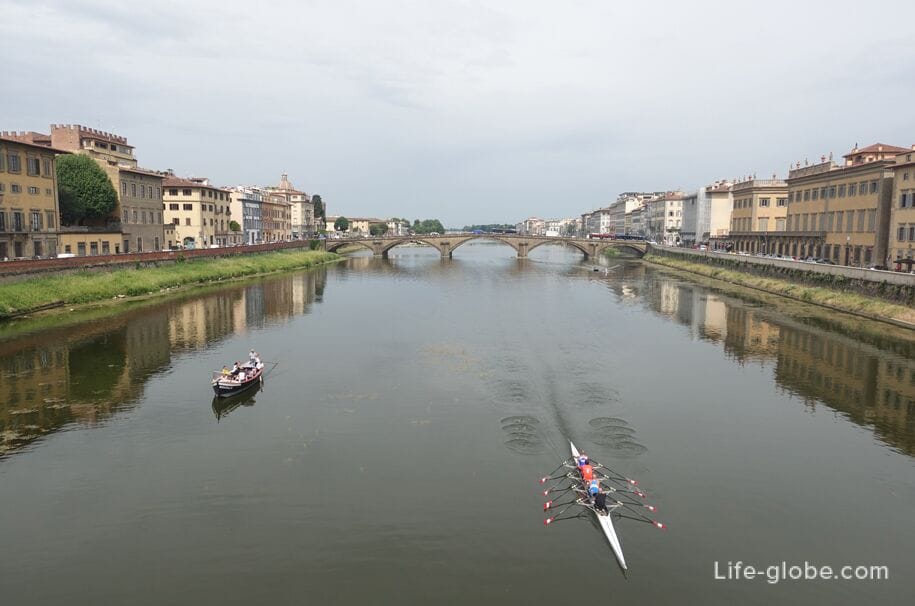
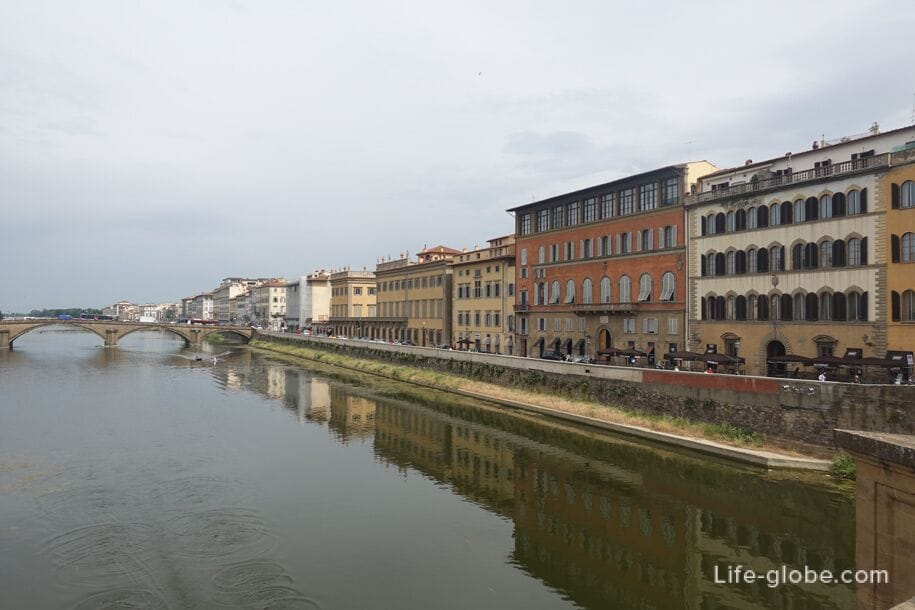
Practical information
The Santa Trinita Bridge is accessible 24 hours a day.
Coordinates of the Santa Trinita Bridge: 43°46'08.0"N 11°15'01.0"E (43.768889, 11.250278).
All accommodation facilities in Florence (hotels, apartments, guest houses, etc.), including in the historical center of the city and more remotely from it, can be viewed and booked here




